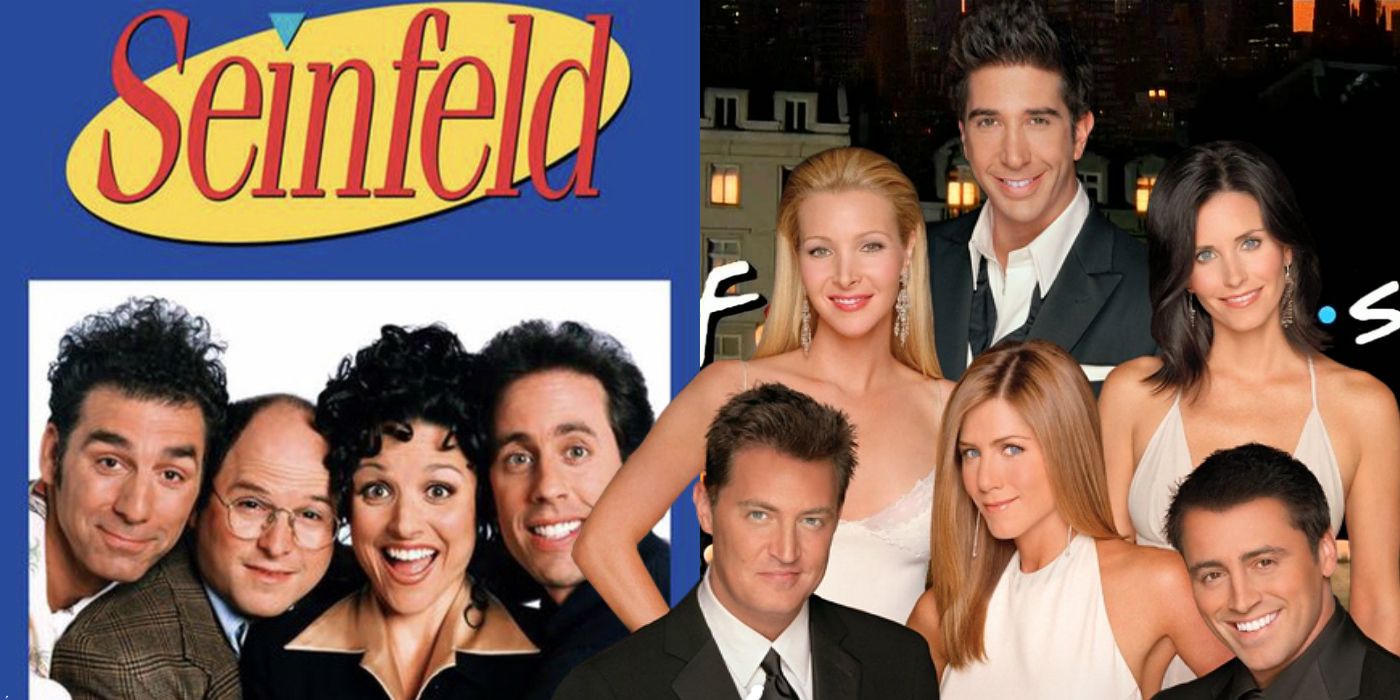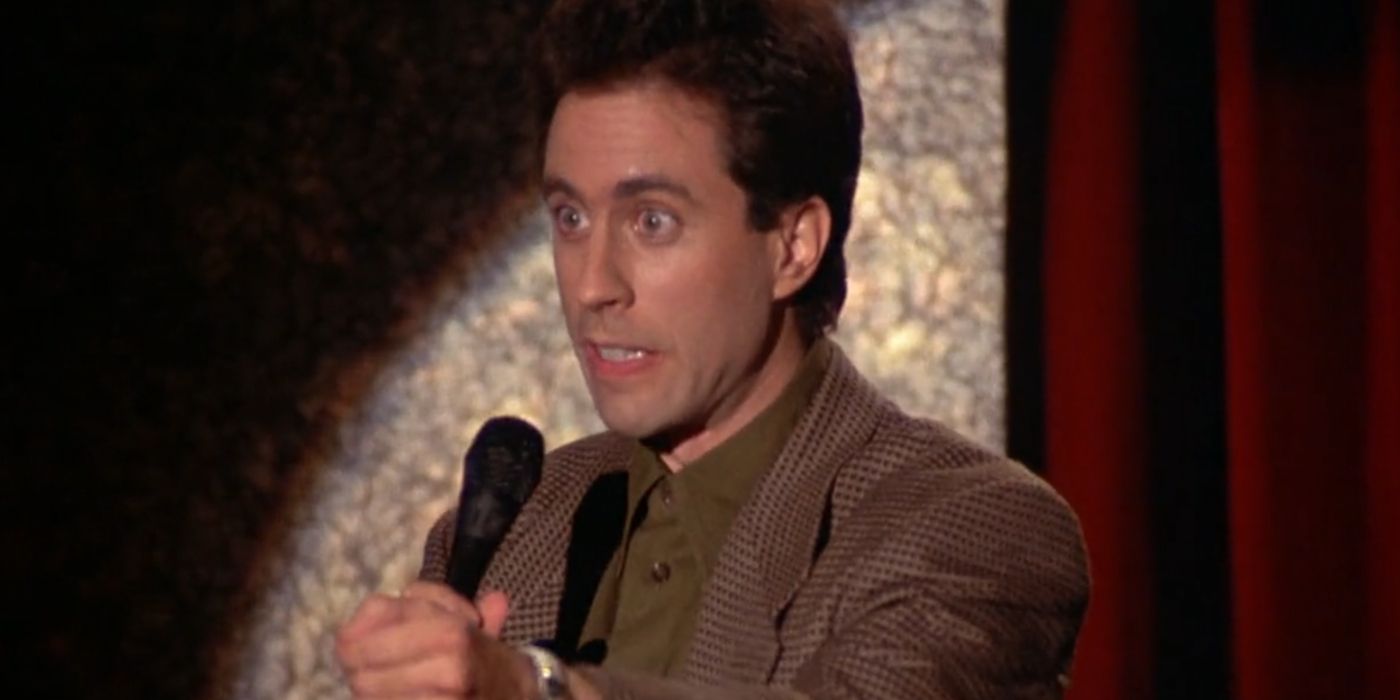The rivalry between Friends and Seinfeld has been revived with recent changes in both shows' streaming status, so let's look at why the two are so often compared and which of them is the real winner in the decades-old Seinfeld vs Friends debate. It's been more than three decades since Seinfeld premiered, and the "show about nothing" remains a critical darling. Friends, meanwhile, celebrated its 25th anniversary in 2019 and is still a cultural behemoth.
SCREENRANT VIDEO OF THE DAY
SCROLL TO CONTINUE WITH CONTENT
In addition to being one of the highest-rated TV shows of the 1990s and early 2000s, Friends is also one of the most-watched shows of the streaming age. When the series was on Netflix, it consistently topped lists of the most-streamed series, suggesting the show's continuing appeal. When HBO Max launched, it spent more than $425 million for the rights to Friends, hoping that the episodes and a Friends reunion special would be a major draw for the fledgling streaming service. In response, Netflix licensed the complete run of Seinfeld, hoping that another beloved '90s sitcom would fill the gap for nostalgic binge-watches. The move has once again forced comparisons between the two series, causing debate about whether Seinfeld is a suitable replacement for Friends and which show is better.
Related: Friends’ Movie Re-release Is Missing Important Episodes
It brings what was a very '90s discussion into the modern-day, which is a reflection of the enduring quality and popularity of the two TV series. There are a few factors as to why Friends and Seinfeld are rivals, and ultimately, regardless of opinion, there is one clear winner in the battle of '90s sitcom titans that is Seinfeld vs Friends.
Why Friends & Seinfeld Are Rivals

Seinfeld and Friends are frequently compared, but why is that? In some ways, the Seinfeld vs Friends debate seems odd. The two shows are actually quite different in their sensibilities, with Seinfeld purporting to be a show about nothing where its characters don't learn and grow, contrasted to the warmer hangout vibe of Friends, which had clearer arcs across seasons and the series as a whole. Nonetheless, there are enough similarities between them, albeit fairly superficial, that have helped turn them into rivals.
Aside from being hit sitcoms in the 90s, both Friends and Seinfeld follow a group of friends living in New York City, detailing their relationships, jobs, and general lives, with an apartment the core setting for both too. Friends and Seinfeld even share the same universe, with the two series linked by Mad About You (which both directly crossed over with). But on top of that is the fact they were on the air at the same time, airing together as part of NBC's Must-See TV block on a Thursday night, and represented the two most popular sitcoms of the '90s (and two of the biggest ever).
The different approaches of Friends and Seinfeld to similar subjects helped to invite comparisons. Seinfeld represented a more sardonic and cynical worldview, represented in jokes like the Junior Mints gag, in comparison to the more heartfelt emotional appeals of Friends, so a person's preferred series often depends on their personality. Since both have developed strong fanbases over the years since they finished their runs on TV and remain a big part of cultural history, the debate has never stopped. It's even been stoked by Seinfeld leading man Jerry Seinfeld, who has previously accused Friends of ripping off Seinfeld (only half-jokingly), and it continues to be a point of division, but who won?
Related: Seinfeld: The Real Story Behind The Marble Rye Episode
Seinfeld Beat Friends In The '90s

Friends and Seinfeld were the two biggest sitcoms of the '90s, but while each had legions of fans watching them on NBC, it was Seinfeld who won the battle back then. Although Seinfeld started in 1989, it wasn't until the early-mid '90s when it really started to grow its audience to incredible levels, and became not only the most popular sitcom of the time, but one of the biggest TV shows overall too. By season 4, when the series when fully hitting its stride, it started to average over 20 million viewers, but it was the next few years that were truly mammoth.
Seinfeld season 5 (4 before the last), which aired in the 1993–94 TV season, averaged just under 30 million viewers, and was the third-highest rank series according to Nielsen ratings. That was Seinfeld's last year without Friends alongside it on NBC, but rather than see the bright-new-thing become more popular, Seinfeld only got bigger. From 1994 to 1998 (when it concluded its run), Seinfeld was always in the top two highest-ranked TV shows as per Nielsen, alongside ER, finishing as number one on two occasions.
Friends was massively popular as well, but it couldn't quite compete with Seinfeld's numbers: The best it could finish when Seinfeld was also on the air was third, with an average of 29.4m viewers for season 3. Friends only finished as the number one show a single time, and that was the 2001–02 TV year, for Friends season 8. Across its run, Friends averaged 23.6 million viewers, contrasted to Seinfeld's 26.6 million. Neither was the big winner of the '90s in terms of awards - that belonged to Frasier, which won the Emmy for Outstanding Comedy Series five years in a row - but in that area too, Seinfeld had slightly more success than Friends: Seinfeld has 10 Emmy wins and 68 nominations, contrasted to Friends' six wins and 62 nominations.
Friends Is The Winner Overall

Seinfeld beat Friends at the time, and it remains more of a critical darling now, for example holding a Tomatometer score of 89 percent compared to Friends' 78 percent. But, while Seinfeld is generally held in higher regard by critics, with particular praise for its writing, it cannot match the enduring cultural popularity of Friends. Even as it enters its 25th year, Friends remains one of the biggest TV shows in the world, with no sign of its popularity dipping anytime soon.
Related: Friends: Why The Apartment Numbers Changed
Both series have been the subject of mammoth streaming deals, but eyebrows were particularly raised when Netflix paid $100 million to keep Friends through 2019. Yes, $100m for just a single year. HBO Max's $425 million deal further suggests just how much of a money-maker Friends still is. Netflix paid even more for Seinfeld, forking over $500 million over five years, but the timing of the move suggests that it was clearly a substitute for Friends, not the other way around. Seinfeld didn't bring a similar influx of views to its previous streaming home, Hulu, and it seems unlikely that it will have the same success that Friends did on Netflix.
Friends merchandise is everywhere; there are entire festivals dedicated to it that constantly tour and sell out; the Friends reunion special attracted major celebrities who grew up with the show. Friends has also had a much greater impact overseas, in part due to its streaming availability and more glamorous depiction of New York life. Because it ran into the 2000s, Friends has a nostalgic appeal to a millennial generation that has made it a streaming hit and object of viral GIFs and memes. As things stand, Friends is definitely the bigger TV show with a popularity that'll seemingly never end, which gives it the win in the long run, even though stances on the quality of each show are matters of opinion. However, there's another way in which Seinfeld has the edge.
Seinfeld Is Aging Better Than Friends

Every sitcom from the '90s and early '00s has moments that are considered problematic today. Seinfeld is certainly no exception, and it contains its fair share of jokes and dialogue that really haven't aged well at all. For example, a retrospectively dark Seinfeld moment – when Jerry's carelessness leads to Babu the Pakistani immigrant getting deported – was played for laughs, and that wouldn't fly in a modern sitcom.
Seinfeld is very much a product of its era. Friends, however, is a different story entirely. It's full of moments that are questionable in ways that can't be excused by the contemporary sensibilities of its release year. Edgy humor was experiencing a renaissance at the time, something Friends would lean into, and it's suffered for it as the years progressed. Rewatches often reveal extremely uncomfortable approaches that three decades have not been kind to, from the way Chandler's Dad in Friends is portrayed to making suicide and depression into the butt of many jokes. For example, the way the others treat Ross is incredibly toxic when weighed up over the course of all 10 seasons (despite his own arguable toxicity in relationships).
Related: Friends: Why Fat Monica Is So Problematic Now
Mental health insensitivity and transphobia are far from Friends' only problems either. It's been remarked on how whitewashed the cast is (especially given the New York setting), which is a criticism Seinfeld also receives but to nowhere near the same degree. The portrayal of Monica's weight issues, including her moniker "Fat Monica," also causes online uproar with increasing regularity. Seinfeld is full of problematic moments that prompt the thought "the 90s were a different time," but the callous insensitivity throughout Friends is almost unwatchable at points – especially since it's dressed up as the less cynical, more wholesome show. Friends might be the winner as far as popularity and revenue go, but Seinfeld is definitely aging better.